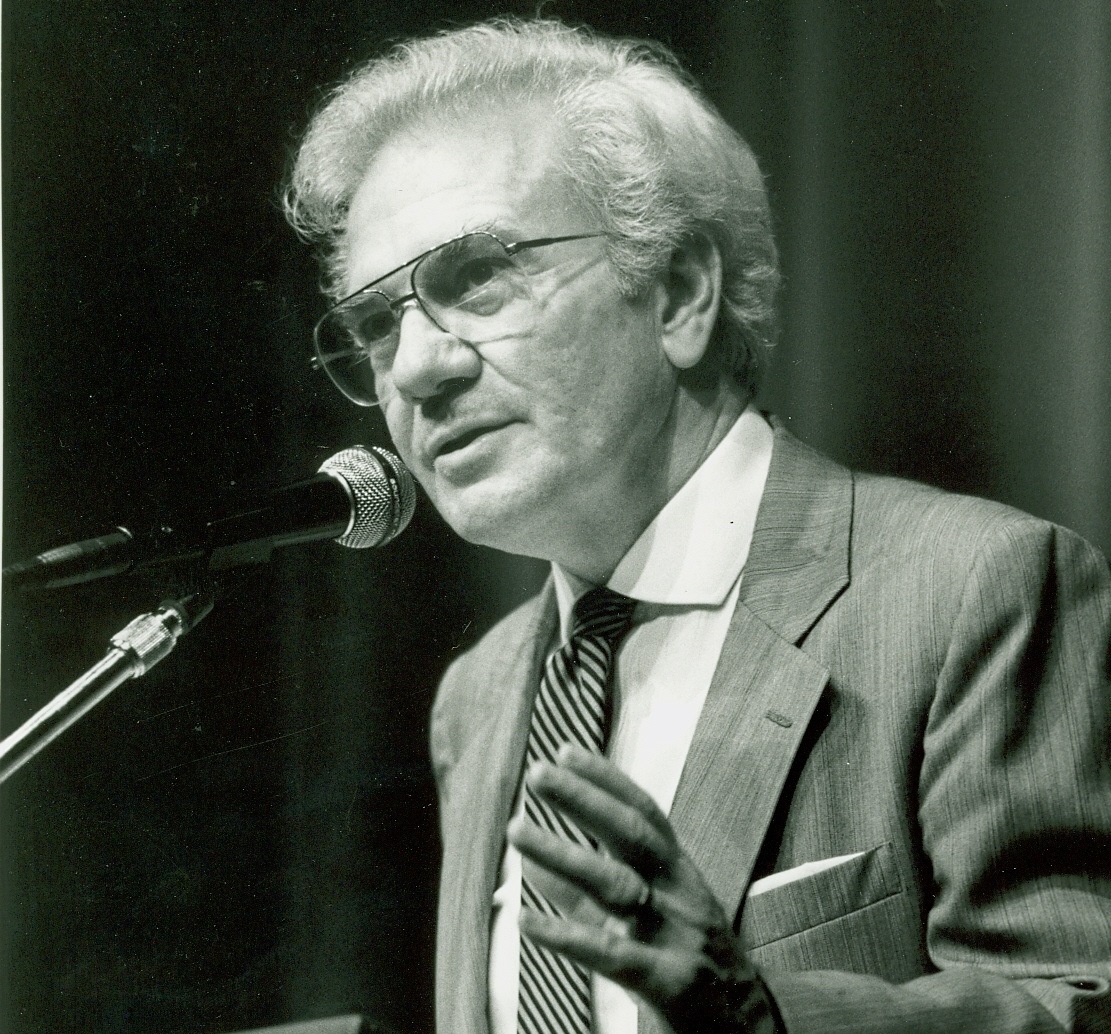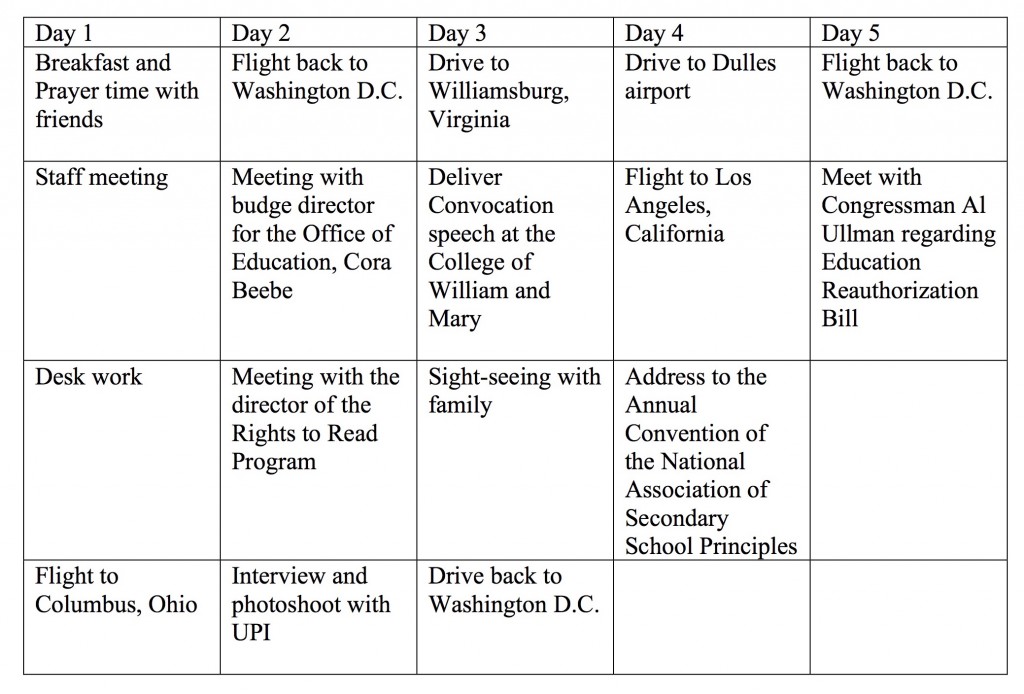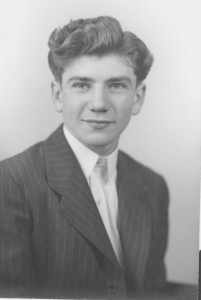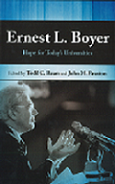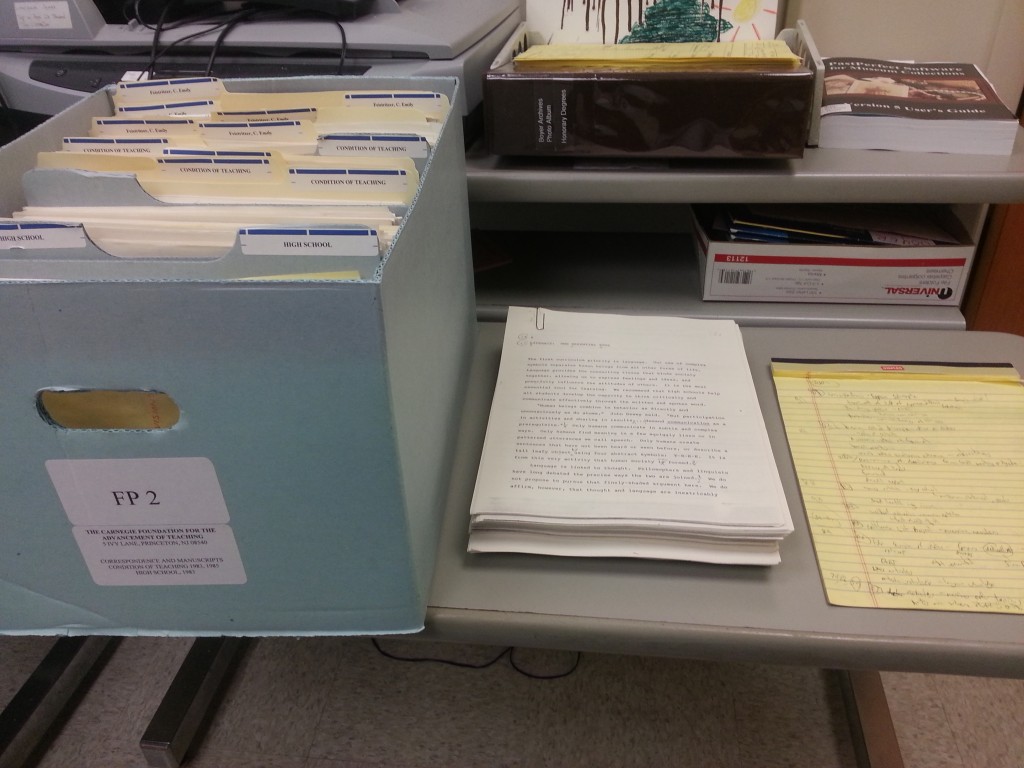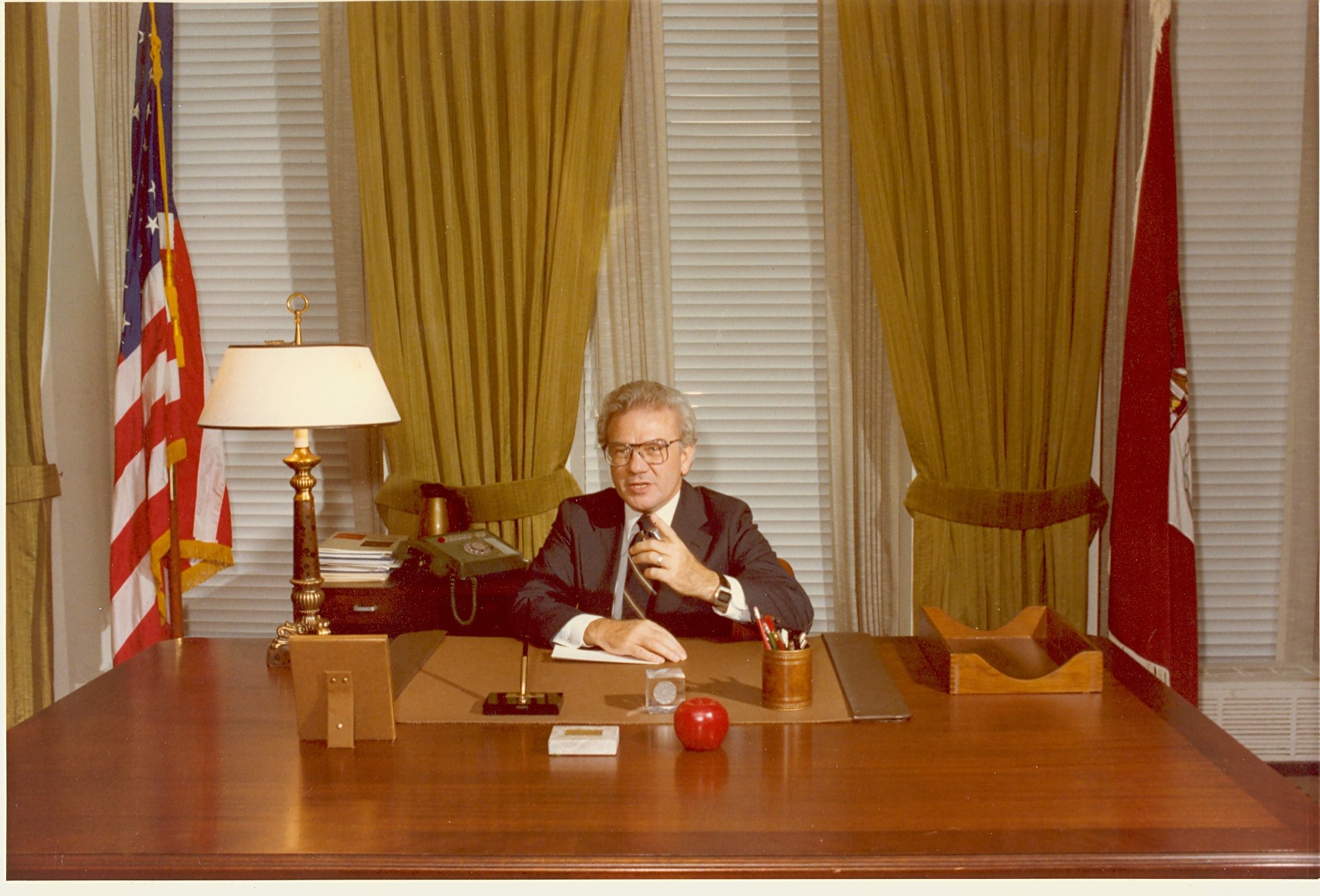
Ernest L. Boyer sitting at his desk at his welcoming party to Washington, DC as the new Commissioner of Education. – BCA
Today’s Photo Friday post features Ernie Boyer sitting at his desk at his welcome party as the United States Commissioner of Education in 1977. Many of the items seen on Boyer’s desk are now housed in the Boyer Archives, which shows just how significant these items were to Boyer’s work. While it may seem obvious, Boyer’s desk was a central location for his work. In fact, when Boyer became president of the Carnegie Foundation for the Advancement of Teaching (CFAT) he had two offices, one as his main CFAT office in New Jersey and the other in Washington, D.C., for when he traveled there on business.
But no matter which desk he was using, for Boyer the desk seemed to be both a place of personal satisfaction and of professional development. In terms of personal satisfaction, Boyer often kept three pictures on the wall by his desk of three people he admired: Helen Keller, Albert Einstein, and Albert Schweitzer. When meeting someone in his office, Boyer would use these pictures as a conversation piece. In addition, like many others, Boyer often used his desk to complete personal work such as answering calls, reading mail, or writing.
Yet, the desk was also a place of professional development. Often Boyer would meet individuals in his office for various reasons: discussing publications, conducting interviews, hosting personal visitors. It is likely that in this small office desk setting that more enlightening or at least more specific information could be discussed, as opposed to bigger discussions in a board meeting. Boyer supports this idea in an unpublished chapter titled “Literacy and Learning.” In it he states:
Several years ago, when I was Commissioner of Education, I walked unannounced into a sixth grade classroom in New Haven [Connecticut]. There were nearly thirty children crowding around the teacher’s desk. I discovered that, rather than confronting an emergency, I had, in fact, become part of a moment of great discovery The children had just finished reading Charles Dickens’s Oliver Twist, and these sixth graders in inner-city New Haven were rigorously debating whether little Oliver could make it in their city.
Even when observing little children, it is clear that the desk can be a place of engagement and learning. Therefore, today’s post features not just Boyer at his desk, but Boyer in the context in which he worked. His work place was both a home base for productivity and a place of great discovery. When these two factors come together, the desk becomes a place of learning.
To read the rest of Boyer’s unpublished chapter, click here.
